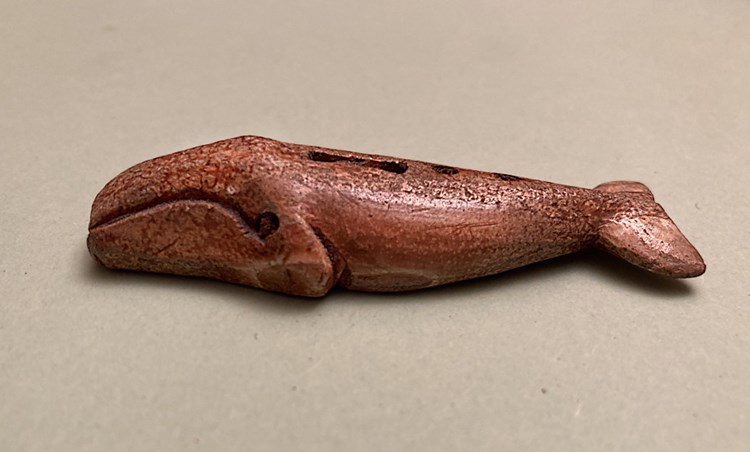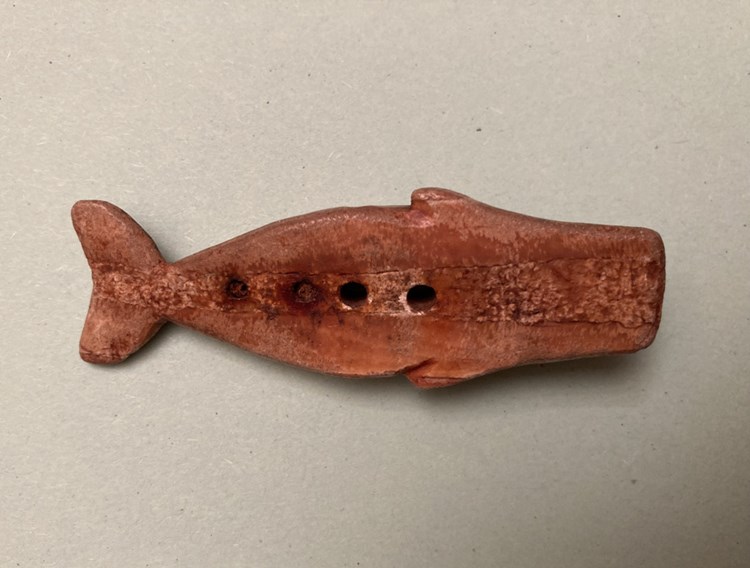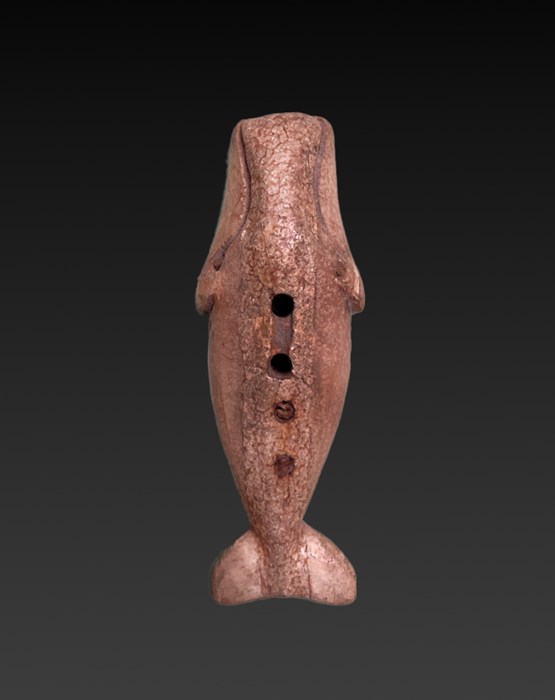Alaska Whale Effigy
An effigy of Bowhead Whale (Balaena mysticetus) carved in a naturalistic but stylized way. The way in which the eyes, mouth, lateral fins and lack of caudal fin as well as the general morphology are represented makes it possible to identify the species. The back of the whale is drilled vertically through with four holes: the two forward serving for an attachment link and the two posterior holes still carry the remains of studs. Whale effigies of this type are used to indicate the number of whales taken by the individual or group and also serve as a lure/amulet to improve hunting. These effigies are found in large numbers on the ceremonial boxes and containers including the buckets used by the wife of the whaler captain to ceremonially pour fresh water into the air vent of the dead whale. Eskimo, Western Alaska. Walrus tusk (odobenus rosmarus divergens) with a beautiful patina of age and use. 6.8 x 2.4 x 1.3 cm. 18 / 19th century.
Provenance Ex. collection of the artist Emilio Rodríguez-Larraín Balta (1928 - 2015), Lima/Paris.
Literature: See the ceremonial bucket from Alaska at the Ethnographic Museum of Geneva, Inv. N° ETHAM 025852












